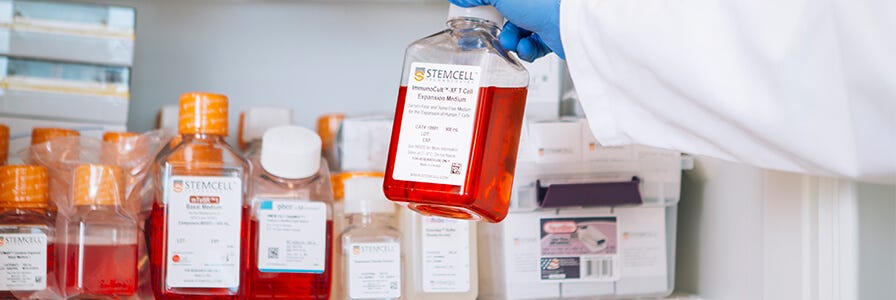Tidying Up Your Lab: Organizing Tips for Researchers
How tidy is your lab?
Disarray erodes productivity, relationships, and happiness. In a popular Netflix reality film series, “Tidying Up”, Marie Kondo rescues families who struggle with keeping their homes organized. The organizing consultant transforms their homes—and their lives—from cluttered mess to neatly organized.

Similar problems can happen in the lab.
A disorganized lab destroys efficiency. When you have a fridge full of reagents of uncertain vintage, and stock cupboards in a state of chaos, finding what you actually need can take twice as long as it should—if you can even find it.
Take the #TidyLab challenge and step towards greater efficiency. Choose one of the four areas below and tidy up. Take before and after photos or screenshots, and share your results with us on Twitter (@STEMCELLTech) using #TidyLab.
1. Storage
Storage spaces include your lab stockroom, refrigerators, and freezers where reagents and consumables are kept. Organizing your storage spaces can help you minimize the risk of running out of reagents, avoid duplicate orders, and allow you to quickly find the reagents you need. Follow these tips to tidy up your storage spaces.
- Designate a labeled location for each category of reagents
- Remove expired and obsolete reagents
- Use a consistent labeling system
- Aliquot stock reagents
- Keep an updated lab inventory spreadsheet
- Defrost your freezers on a regular basis
See more tips for keeping your lab storage spaces organized >
2. Work
Your lab work spaces include the lab bench, biosafety cabinets, and fume hoods. Organizing your working spaces will allow you to easily access your reagents and tools with the least amount of effort. Follow these tips to tidy up your lab work spaces.
- Place pipets, tip boxes and waste bins on the side of your dominant hand
- Put solutions that you use daily on your non-dominant side.
- Confine miscellaneous items that you don’t use on a daily basis to the periphery
- Designate spots for general supplies (e.g. markers, scissors, calculators)
- Remove redundant items
- Keep notebooks away from central area
See more tips for organizing your lab bench >
3. Office
Your office includes your desk, electronic files, and papers. Keeping them organized can help you be prepared for writing grants, publications, and dissertations. You’ll save time by being able to find the papers and files you need quickly. Follow these tips to tidy up your office.
- Create intuitive electronic folder structures
- Use clear and accurate file names
- Develop a reference filing system
- Use reference manager tools (e.g. Mendeley)
- Subscribe to Science News to get notified of new publications in your field
- Organize your storage compartments by categories of items
See tips for organizing your notebook, references, and protocols >
4. Time
Your time includes your schedule, to-do list, and how long you spend on each activity. Planning ahead and making efforts to work smarter, not harder, will boost your efficiency. In turn, you will improve your productivity and achieve better work-life balance. Follow these tips to tidy up your time.
- Make a to-do list on a regular basis, or use a calendar to schedule your activities
- Take into account breaks, deadlines, meetings, and classes in addition to experiments
- Include realistic task durations
- Schedule time to write, read papers, or prepare for presentations
- Book shared equipment ahead of time
- Switch to more efficient technologies and protocols (e.g. more efficient cell separation technology)
See more tips for planning ahead >
Which category will you tackle first? Take before and after photos or screenshots of your transformation and share them with us on Twitter (@STEMCELLTech) using #TidyLab.
Download Templates and Spreadsheets
Organize your lab and your time using these templates, spreadsheets, and checklists
Efficient Tools and Technologies for Research
Accomplish more in less time and with less effort by making smarter choices for the tools you use in the lab.



